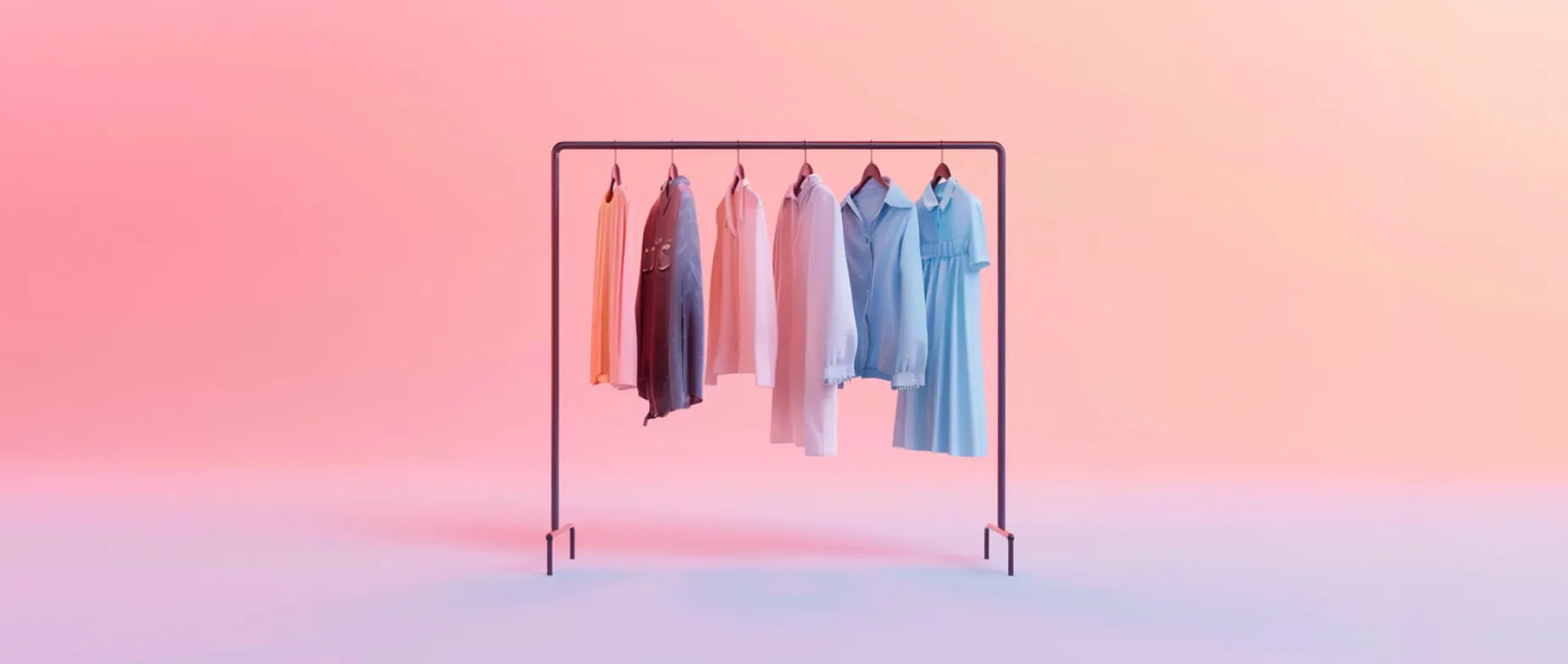
The Transformative Power of Augmented Reality in Fashion Retail
Table of Contents
- Key Highlights:
- Introduction
- What is AR Clothing Try-On?
- Benefits of AR Clothing Try-On
- Challenges of AR Clothing Try-On
- Best Apps for Virtual Try-On Clothes
- Conclusion
Key Highlights:
- Augmented reality (AR) in fashion retail enhances the online shopping experience by allowing customers to virtually try on clothing, which has been shown to decrease return rates by up to 64%.
- Major retailers and luxury brands are leveraging AR technology, which significantly boosts browsing times and online sales by nearly 20%.
- Despite its advantages, challenges like technical limitations and labor-intensive implementation remain hurdles for broader AR adoption.
Introduction
Augmented reality (AR) has emerged as a game-changing technology that is revolutionizing the fashion retail landscape. Once confined to the realms of military applications and special effects in films, AR has found a vibrant application in the shopping experience, transforming how consumers interact with clothing and accessories. Leading retailers now employ AR technologies to grant online shoppers the ability to try on products seamlessly from their own homes, effectively bridging the gap between physical and digital shopping experiences.
As the competition in the ecommerce arena intensifies, understanding the implications of AR technology in fashion retail becomes more critical than ever. This article embarks on a comprehensive exploration of AR clothing try-on technology, examining its benefits, challenges, and real-world applications.
What is AR Clothing Try-On?
AR clothing try-on technology refers to the innovative overlay of digital garments onto live video feeds of consumers, accessible via smartphones, tablets, and even AR mirrors in physical stores. This virtual fitting room experience allows potential buyers to visualize how a garment fits their body and complexion before making a purchasing decision, effectively removing one of the significant pain points in the online shopping journey.
Unlike virtual reality (VR), which immerses users in a digitally created environment, AR enhances reality by placing digital assets into the physical world. This blended approach offers a sense of presence and interactivity that traditional online shopping methods fail to provide.
AR clothing try-on tools can operate in two primary formats: interactive (where movements of the user are captured and mirrored in real-time) or static (where a photo is uploaded and used for digital dressing). The ability to simulate the shopping experience outside of the constraints of time and location makes AR a highly valuable tool for both consumers and retailers.
Benefits of AR Clothing Try-On
Decreased Returns
One of the significant advantages of AR in retail is its profound impact on reducing return rates. Traditional online shopping faces a considerable challenge with customers often returning items that do not fit or appear differently than expected. With AR try-on technologies, customers can visualize the fit and style of clothing items before purchasing, significantly decreasing the likelihood of buyer's remorse. A study by the virtual try-on company, Perfitly, showcased that their users experienced return rates dropping by as much as 64%, effectively streamlining the returns process and saving costs for retailers.
Improved Personalization
AR technology not only enhances the shopping experience through visualization but also offers advanced personalization features. Retailers can leverage customer data to provide tailored recommendations, improving engagement and satisfaction. The ability to analyze body shapes, sizes, and individual style preferences generates a curated shopping list that resonates with the consumer, ultimately boosting conversion rates. Personalized upsells and product suggestions create a stronger bond between customers and brands, fostering loyalty.
Differentiation in a Competitive Market
With ecommerce increasingly crowded, differentiation becomes daunting for brands. By adopting AR technologies, retailers can stand out in a saturated market, with statistics indicating that brands utilizing AR experiences are 41% more likely to capture consumer attention compared to their competitors who do not. Offering a unique and interactive shopping experience not only attracts customers but also cultivates lasting brand loyalty.
Challenges of AR Clothing Try-On
Technical Limitations
Despite its promising potential, AR bodies various challenges, particularly concerning technical limitations. The effectiveness of AR clothing try-ons hinges on the hardware and software capabilities of both the customer and the retailer. Inconsistent lighting conditions, poor camera quality, and varying device specifications can adversely affect the quality of the AR experience. For instance, if a customer employs a low-resolution camera, the interactive trial may not render an accurate depiction of how the clothing will look, leading to frustration and dissatisfaction.
A shining example of overcoming technical hurdles is the luxury brand Rebecca Minkoff, which successfully integrated 3D modeling with AR to present their garments realistically. This method allowed them to showcase essential details like texture and fit, thereby enhancing overall customer experience.
Lack of Sensory Input
Another crucial challenge is the inherent limitation of AR technology in providing tactile feedback. While AR allows for visual simulation of garments, it cannot replicate the physical sensation of fabrics or the way clothing drapes on the body. Customers may struggle to assess certain qualities, such as texture or fit nuances, when relying solely on virtual try-on technology. This limitation highlights the importance of high-quality 3D models that accurately represent fabric characteristics to create a seamless experience.
Labor-Intensive Implementation
Implementing AR technology also requires substantial resources. The process of creating AR-ready assets involves comprehensive photo captures from multiple angles and the meticulous generation of 3D models that balance detail with performance. These tasks can be labor-intensive and potentially costly, slowing down the adoption rate of AR solutions. Fortunately, numerous applications in platforms like the Shopify App Store aim to simplify the implementation process for retailers, offering user-friendly solutions that minimize hassle.
Best Apps for Virtual Try-On Clothes
To bring AR clothing try-on visibility to a wider audience, various applications are available for retailers looking to adopt this technology:
1. Virtual Try On
Nivera's AI-powered Virtual Try On app allows consumers to upload a single image, creating a visual representation of how garments might look on their body. With seamless integration into storefronts and tracking capabilities for conversions and sales, it provides a comprehensive tool for boosting online engagement.
2. Camweara
Camweara offers a unique experience by enabling customers to try on not only apparel but also accessories, jewelry, and electronics. Its powerful AR engine provides options for real-time usage through live video, photo mode, or a detailed 3D display.
3. OnYou
Designed specifically for fashion brands, OnYou's app simplifies the try-on experience by letting users upload a single photo. Coupled with size-recommendation features, this app effectively minimizes returns while maximizing usability.
FAQ
Is there a way to virtually try on clothes?
Yes, augmented reality (AR) technologies enable users to virtually try on clothes through AR apps and platforms that use cameras and sensors to project virtual garments onto a live image or video of the user.
Is there an app that lets you try on clothes?
Many apps offer virtual try-on capabilities, particularly those compatible with Shopify. Popular options include Virtual Try On, Camweara, and OnYou. Other notable applications include Style.me, Fitnonce, Swan.ai, and AlterEgo.
Do I need special glasses to use AR to try on clothes?
No special glasses are required to utilize AR for trying on clothes. AR functions by overlaying digital products onto the physical world. Users only need a smartphone, tablet, or computer equipped with a camera. Some physical retail environments may utilize AR mirrors for enhanced experiences.
Conclusion
The integration of augmented reality technology into fashion retail signifies a pivotal moment for ecommerce. By harnessing AR's capabilities, retailers can deliver immersive experiences that empower customers with greater control over their shopping journey. As technology advances and more AR solutions emerge, overcoming existing challenges will pave the way for a future where virtual try-on becomes the norm, ultimately reshaping the consumer experience in fashion retail. The path forward is charged with the potential to revolutionize not only how we view retail but also the underlying relationship between brands and their consumers.
POWER your ecommerce with our weekly insights and updates!
Stay aligned on what's happening in the commerce world
Email Address
Handpicked for You

08 September 2025 / Blog
How to Avoid Greenwashing: Rules, Real-World Examples, and a Practical Playbook for Honest Environmental Claims
Read more
08 September 2025 / Blog
Klaviyo 2025: How its AI-Driven CRM Transforms Shopify Email Marketing and the Customer Experience
Read more
08 September 2025 / Blog


